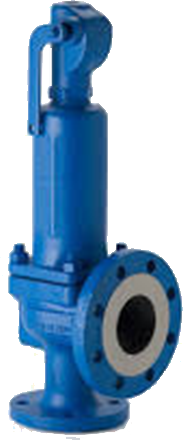Safety Valves

Safety valves should be installed wherever the maximum allowable working pressure (MAWP) of a system or pressure-containing vessel is likely to be exceeded. In steam systems, safety valves are typically used for boiler overpressure protection and other applications such as downstream of pressure reducing controls. Although their primary role is for safety, safety valves are also used in process operations to prevent product damage due to excess pressure. Pressure excess can be generated in a number of different situations.
Types: Low lift safety valve, Full lift safety valve, Full bore safety valve, Conventional safety relief valve, Balanced safety relief valve, Power-actuated safety relief valve.
- Types: Low lift safety valve, Full lift safety valve, Full bore safety valve, Conventional safety relief valve, Balanced safety relief valve, Power-actuated safety relief valve.
- Media: Gas, Steam and Liquid
- Materials: Carbon Steel, Alloy Steel, Hastelloy, Monel
- Size: 15 NB-GM/20 to 50 NB CS
- Ends: Scr. BSPT
- Over Pressure: Gas and Steam and Liquid 10%, 21%
- Blowdown: Gas and Steam 5% to 7% & less than 21% for Liquid
- Set Pressure Range: From 0.8 bar to 400 bar (for Gas), up to 1500 bar for Liquid
- Temperature Range: From -200 Degree C to 400 Degree C
- Options: Bellows, Flushing nozzles, Lifting lever, Test gag, Resilient or Hardened seat Model Number
- Design Codes: API-520, API-521, API-526, API-527, ASME-B 16.34, ASME-B 16.5, ASME-Section VII
- Brands: UKL, SPIRAX SARCO, FORBES MARSHALL etc